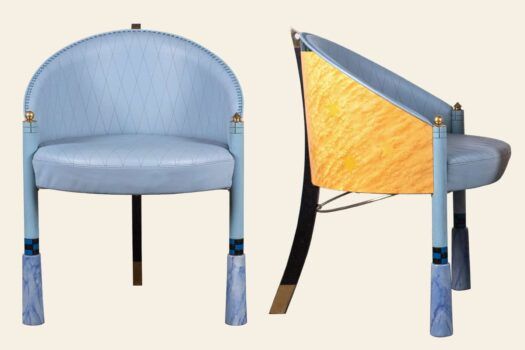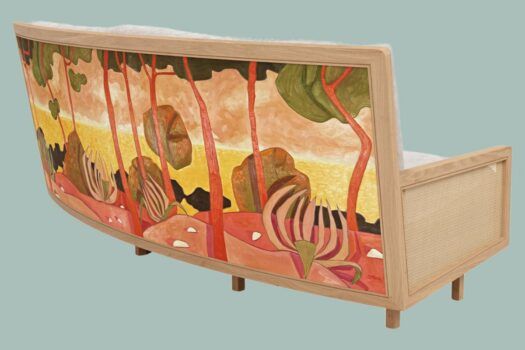
Marlon Mullen’s Desert with Cactus (1997) draws viewers into a landscape that’s both familiar and unknowable.
The painting’s biomorphic forms — perhaps there’s a cactus, perhaps a canyon, perhaps an adobe sweat lodge, maybe something else entirely — are rendered in thick layers of acrylic paint on paper. Mullen uses just four eye-catching colors, colliding in deep contrast: stark white, jet black, milk-chocolate brown and bubble-gum pink.
The ambiguity of the piece is part of its allure, leaving viewers to wonder: Is this a literal desert scene, one from the imaginal realm or an interpretation of a picture Mullen saw in a book or magazine?
“One of the most captivating aspects of art is its ability to evoke mystery, and Marlon Mullen exemplifies this power through his work,” says Jayson Lawfer, director of Chicago-based gallery The Nevica Project, which is offering the piece on 1stDibs.
Born in Richmond, California, in 1963, Mullen, who has autism spectrum disorder and is mostly nonspeaking, has carved out a singular niche in the contemporary art world.
For more than three decades, he’s been painting at the acclaimed NIAD (Nurturing Independence through Artistic Development) Art Center, a studio that supports all kinds of creators with neurodivergent diagnoses or disabilities. His work is in the permanent collections of major institutions, including the Whitney Museum of American Art, which featured one of his canvases in its 2019 Biennial.

Many of Mullen’s compositions involve him selecting covers or interior pages from art magazines — Artforum, Sculpture, Frieze and so on — which he then reimagines in his own expressive style, rearranging, cropping, distorting and abstracting elements of the publications’ layouts. (He even paints the spines of the magazines on the sides of the canvases.)
This segment of his oeuvre is currently the focus of a solo show in the project space of the Museum of Modern Art in New York. On view through April 20, “Projects: Marlon Mullen” spotlights a selection of his art-mag paintings from the past decade.
Complementing the bold artworks, the exhibition design includes soft gray carpeting and movable podlike seats manufactured to absorb sound, perfect for museumgoers who get overwhelmed by too much sensory input.
Desert with Cactus, created early in Mullen’s career, is more enigmatic in its content and meaning. “Mullen’s art opens a space for contemplation,” Lawfer says, “allowing us to explore the unknown dimensions of his work.”
The painting speaks to the power of art to transcend words and conventional understanding.







